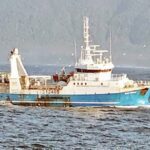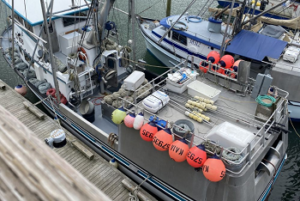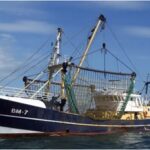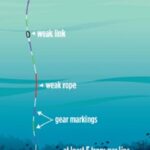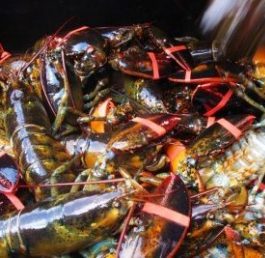Daily Archives: January 4, 2017

The New School in Kennebunk teaching commercial fishing course
By Shelley Wigglesworth – I have been privileged to help design and instruct a “public policy in the commercial fishing industry” course for high school students, along with teacher Steven Schaefer, at The New School, here in Kennebunk. When Schaefer first approached me about working with him, he wanted the students to hear from real people working in the industry and to learn from the men and women who know the ocean intimately, as only those who navigate it and rely on it to earn their living can. He wanted the students to learn about the side of fishing that you do not see in picturesque summer tourist photos in quaint harbors. Read the story here 16:50
The Surprising Side Effect of Anti-Anxiety Medication — on Salmon
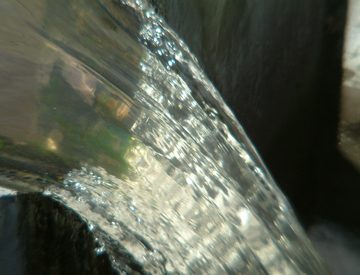 In a study out of Sweden’s Umeå University, researchers show oxazepam — a pharmaceutical prescribed to humans for the treatment of anxiety, alcohol withdrawal, and insomnia — affects the downstream migratory behaviour of Atlantic salmon. Exposing fish to anti-anxiety medication isn’t something that only happens in scientific studies: when humans excrete drugs, some can end up in wastewater effluent and subsequently in sensitive habitats where salmon may get an unintended dose. The researchers found that when fish ingest oxazepam, it makes them migrate faster and farther — potentially recklessly so. Leaving the freshwater nursery and heading out to sea is part of the salmon lifecycle, but landing in the big blue too soon can be risky. Fish may find ocean conditions unfavourable — too cold, too dangerous, or lacking food, for example. Read the story here 14:19
In a study out of Sweden’s Umeå University, researchers show oxazepam — a pharmaceutical prescribed to humans for the treatment of anxiety, alcohol withdrawal, and insomnia — affects the downstream migratory behaviour of Atlantic salmon. Exposing fish to anti-anxiety medication isn’t something that only happens in scientific studies: when humans excrete drugs, some can end up in wastewater effluent and subsequently in sensitive habitats where salmon may get an unintended dose. The researchers found that when fish ingest oxazepam, it makes them migrate faster and farther — potentially recklessly so. Leaving the freshwater nursery and heading out to sea is part of the salmon lifecycle, but landing in the big blue too soon can be risky. Fish may find ocean conditions unfavourable — too cold, too dangerous, or lacking food, for example. Read the story here 14:19
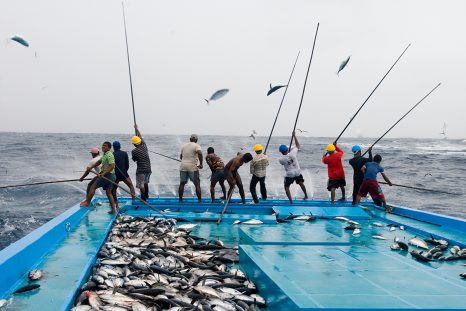
Ready for this one? Sustainable tuna fishing is bad for climate
What’s good for the ocean might be bad for the planet. Fishing boats that target specific species, leaving others free to swim away, use more fuel than vessels intent on simply scooping up all the fish in their vicinity. Eco-label initiatives and programmes like Monterey Bay Aquarium’s Seafood Watch, meant to help hungry diners quickly select sustainably caught seafood, have been gathering public support in recent years, says Brandi McKuin at the University of California Merced. While those guides are helpful, their standards focus mainly on fishing-based factors, like leaving enough fish in the ocean to avoid decimating the population, and reducing the number of accidently caught fish, or bycatch, McKuin says. Other impacts, including the greenhouse gas emissions generated by using different types of fishing gear, are often overlooked. “If we’re including climate change in the sustainability criteria, it changes things,” McKuin says. Read the story here 13:31
Dongwon Industries catches bluefin tuna for first time in waters off Iceland
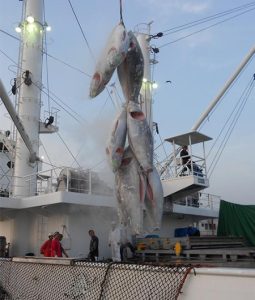 Dongwon Industries Co., South Korea’s largest fishing company, said Tuesday it netted up tuna from high-latitude North Atlantic Ocean, a deep-sea area nearly monopolized by Japanese fishers well experienced against tumultuous sea climate and freezing waters. The company said it will put the first catches at its retail restaurants this month. The top-tier bluefin features thick fat and firm texture built to protect body temperature from cold exposure. The North Atlantic species represent only 0.4 percent of bluefin tuna caught around the world. Because of this rarity, a 400kg bluefin tuna caught in the sea sells at about 12 million won ($10,000) in the international market. The tuna fishing company has operated mostly in southern Pacific Ocean. The company said its advance into the high-latitude North Atlantic Ocean required 16 months of preparation. Ships were modified to shield against the waves and to allow better drainage. In addition, a veteran fishing foreman was recruited from Japan. The company sailed two fishing vessels to fish tuna throughout October in the waters off Iceland. The tuna caught weighs over 200kg on average and the heaviest one weighs nearly 300kg, the company said. Link 12:47
Dongwon Industries Co., South Korea’s largest fishing company, said Tuesday it netted up tuna from high-latitude North Atlantic Ocean, a deep-sea area nearly monopolized by Japanese fishers well experienced against tumultuous sea climate and freezing waters. The company said it will put the first catches at its retail restaurants this month. The top-tier bluefin features thick fat and firm texture built to protect body temperature from cold exposure. The North Atlantic species represent only 0.4 percent of bluefin tuna caught around the world. Because of this rarity, a 400kg bluefin tuna caught in the sea sells at about 12 million won ($10,000) in the international market. The tuna fishing company has operated mostly in southern Pacific Ocean. The company said its advance into the high-latitude North Atlantic Ocean required 16 months of preparation. Ships were modified to shield against the waves and to allow better drainage. In addition, a veteran fishing foreman was recruited from Japan. The company sailed two fishing vessels to fish tuna throughout October in the waters off Iceland. The tuna caught weighs over 200kg on average and the heaviest one weighs nearly 300kg, the company said. Link 12:47
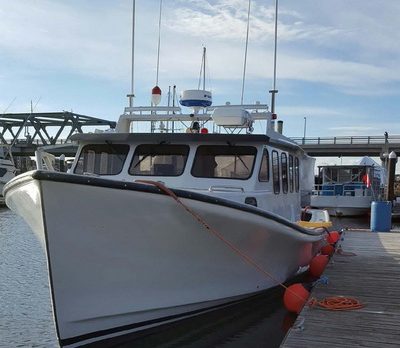
Athearn Marine Agency Boat of the Week: 2013 45′ Hutt Bros. Lobster boat, 6 Cylinder Lugger Diesel- Exceptional condition
Specifications, information and 26 photo’s click here To see all the boats in this series, Click here 11:50
Strike Update – Crab fishermen stand strong, hold out for Pacific Seafoods pre-negotiated price
 Commercial crab fishermen continue to strike along the West Coast, hoping processors will pay the $3 opening price that was negotiated prior to the season opening. Instead, wholesale buyers and processors have not budged on the $2.75 per pound they are now offering. The $3 per pound price was negotiated prior to the Brookings and Port Orford crab opening on Dec. 18. The price was lowered on Dec. 26, just eight days after that partial opening of the fishery. In response, crab fishermen from Morro Bay, Calif., to the Canadian border have tied up their boats. One local processor is Bandon Pacific in Charleston, a division of Pacific Seafood, which owns and operates more than 38 processing and distribution facilities from Alaska to Texas, with many of them on the West coast in coastal communities throughout the Pacific region. John Corbin, president of the Oregon Dungeness Crab Commission, and a fisherman who lives in Seaside and fishes the Columbia River, said there has been “really no change” since fishermen decided to strike. Corbin said fishermen all along the coast in different ports have been meeting daily via phone conference, but processors have not met with them. Read the story here 10:51
Commercial crab fishermen continue to strike along the West Coast, hoping processors will pay the $3 opening price that was negotiated prior to the season opening. Instead, wholesale buyers and processors have not budged on the $2.75 per pound they are now offering. The $3 per pound price was negotiated prior to the Brookings and Port Orford crab opening on Dec. 18. The price was lowered on Dec. 26, just eight days after that partial opening of the fishery. In response, crab fishermen from Morro Bay, Calif., to the Canadian border have tied up their boats. One local processor is Bandon Pacific in Charleston, a division of Pacific Seafood, which owns and operates more than 38 processing and distribution facilities from Alaska to Texas, with many of them on the West coast in coastal communities throughout the Pacific region. John Corbin, president of the Oregon Dungeness Crab Commission, and a fisherman who lives in Seaside and fishes the Columbia River, said there has been “really no change” since fishermen decided to strike. Corbin said fishermen all along the coast in different ports have been meeting daily via phone conference, but processors have not met with them. Read the story here 10:51
‘I was driving in lobster,’ Beaches strewn with ‘millions’ of lobsters after storm surge along New Brunswick’s northeast coast
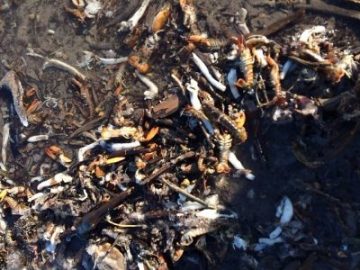 Jean Benoit says he never expected to see what he described as ‘millions’ of lobsters washed up on the beach in Val Comeau, N.B., on Saturday morning. “I was driving in lobster,” he said of his trip to the beach about 10 kilometres from Tracadie-Sheila on the Acadian Peninsula. Benoit and his friends routinely check the beach after storms but weren’t prepared for what they found New Year’s Eve, after Environment Canada warned of a storm surge the day before. “It was incredible all the lobster that we can get there,” Benoit said. “It was amazing. We cannot imagine what the wind can bring us, but it was too much.” He described seeing lobster, crabs and big clams washed up in stretches of 150 metres, then nothing for a stretch of 300 metres, then more shellfish again. Read the story here 09:37
Jean Benoit says he never expected to see what he described as ‘millions’ of lobsters washed up on the beach in Val Comeau, N.B., on Saturday morning. “I was driving in lobster,” he said of his trip to the beach about 10 kilometres from Tracadie-Sheila on the Acadian Peninsula. Benoit and his friends routinely check the beach after storms but weren’t prepared for what they found New Year’s Eve, after Environment Canada warned of a storm surge the day before. “It was incredible all the lobster that we can get there,” Benoit said. “It was amazing. We cannot imagine what the wind can bring us, but it was too much.” He described seeing lobster, crabs and big clams washed up in stretches of 150 metres, then nothing for a stretch of 300 metres, then more shellfish again. Read the story here 09:37
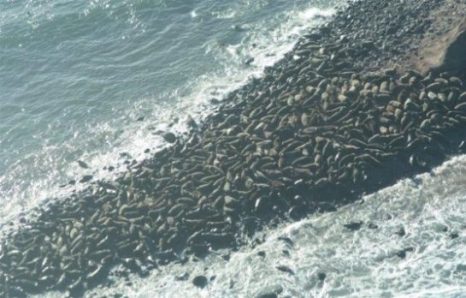
Quebec rejects proposed cull of Brion Island grey seals, to dismay of local biologist
A biologist from the Magdalen Islands is angry the Quebec government has rejected a plan to slaughter 1,200 grey seals on Brion Island, a nature reserve in the archipelago, for scientific research. The grey seal population in the area has ballooned from 400 in 1999 to 10,000 today. The proposal from Dr. Pierre-Yves Daoust, a wildlife veterinarian and pathologist at UPEI’s Atlantic Veterinary College at UPEI, hinged on getting the approval of Quebec’s fisheries and environment ministries. It was rejected last month. Biologist Sébastien Cyr said the proposed cull had the unanimous support of people in the Magdalen Islands. “All the fishermen’s associations had supported the project, the environmental groups as well, the municipality’s residents … There was a consensus in the community for the project,” Cyr said. Read the story here 09:02
Participants in cooperative winter sampling program for Gulf of Maine northern shrimp announced
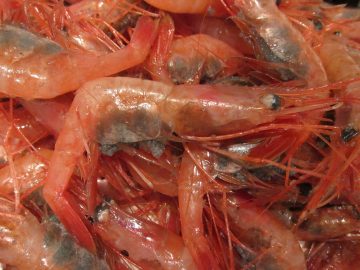 The program, coordinated by the Maine Department of Marine Resources, New Hampshire Fish and Game Department, and Massachusetts Division of Marine Fisheries, is designed to provide biological data on the shrimp fishery which is closed for the fourth year in a row. These Maine fishermen were chosen from over 60 applicants based on a random drawing of those fully qualified in each region. Preference was given to trawlers willing to participate in a test of a compound grate for harvesting. The sampling program will include the participation of 10 trawlers (eight Maine trawlers, one Massachusetts trawler and one New Hampshire trawler) and five Maine trappers fishing for eight weeks from mid-January to mid-March. Read the story here 08:15
The program, coordinated by the Maine Department of Marine Resources, New Hampshire Fish and Game Department, and Massachusetts Division of Marine Fisheries, is designed to provide biological data on the shrimp fishery which is closed for the fourth year in a row. These Maine fishermen were chosen from over 60 applicants based on a random drawing of those fully qualified in each region. Preference was given to trawlers willing to participate in a test of a compound grate for harvesting. The sampling program will include the participation of 10 trawlers (eight Maine trawlers, one Massachusetts trawler and one New Hampshire trawler) and five Maine trappers fishing for eight weeks from mid-January to mid-March. Read the story here 08:15





































